

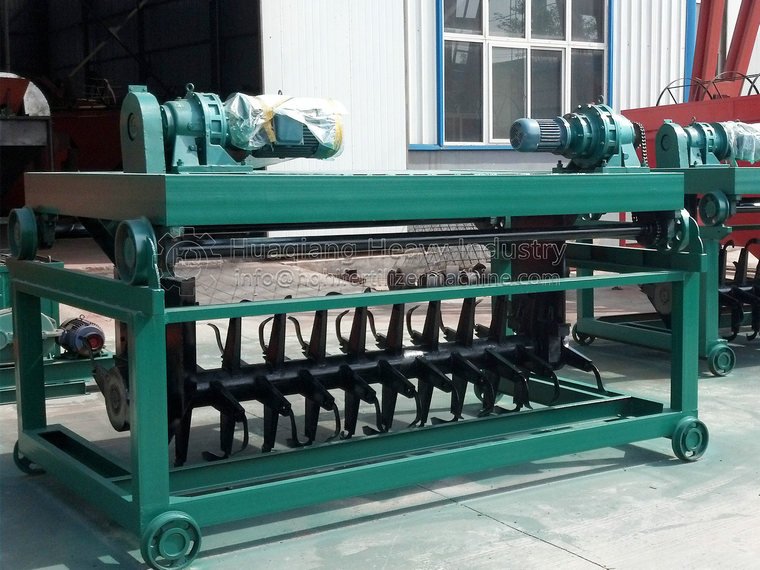



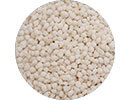
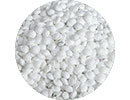
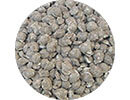
A trough compost turner is a device specifically designed for fermentation processing. By turning and stirring materials within the fermentation tank, it creates a suitable environment for fermentation. It is widely used in fields such as organic fertilizer production. Its core working principle is to use the turning teeth on the mechanical arm to perform a reciprocating motion within the fermentation tank, turning the accumulated materials, allowing them to fully contact the air. This simultaneously regulates the temperature and humidity of the materials, promotes microbial activity, and accelerates the composting and fermentation of the materials.
This equipment adopts a trough structure design, which can realize continuous fermentation operations. Compared with traditional manual turning or ground composting methods, the fermentation efficiency is greatly improved, the fermentation cycle is significantly shortened, and it can effectively control odor and pollution during the fermentation process. It is one of the key equipment for large-scale organic fertilizer production.
The trough compost turning machine has strong adaptability to fermentation raw materials and can process a variety of organic wastes, as follows:
Livestock and poultry manure
This includes chicken, pig, cow, and sheep manure, which are rich in organic matter and nutrients like nitrogen, phosphorus, and potassium, making them excellent raw materials for producing organic fertilizer. The trough compost turning machine turns the manure to fully ferment it, killing pathogens, insect eggs, and weed seeds, while also eliminating odor.
Crop straw
Corn straw, wheat straw, rice straw, etc. contain a large amount of cellulose, hemicellulose and lignin, which can be converted into organic matter in organic fertilizer through fermentation. The trough compost turning machine can evenly mix the straw with other raw materials to promote the decomposition and maturity of the straw.
Edible mushroom residue
The residue from mushroom cultivation, rich in mycelium and underutilized nutrients, is a high-quality organic fermentation raw material. After fermentation in a compost turning machine, it can be made into highly effective organic fertilizer.
Industrial organic waste
These wastes include organic by-products generated during industrial production processes, such as wine dregs, vinegar dregs, sugar residues, and oil residues. These wastes contain certain organic matter and nutrients, and can be recycled after fermentation by a trough compost turning machine.
Municipal sludge
Sludge generated by municipal sewage treatment plants contains a large amount of organic matter, but may also contain harmful substances such as heavy metals. It must undergo rigorous testing and treatment before it can be used as fermentation raw material. The trough compost turning machine can fully ferment the sludge, reduce its moisture content, and stabilize its properties.
The trough compost turning machine consists of several key components that work together to ensure the smooth progress of the compost turning operation. The specific components are as follows:
frame
The frame is the basic supporting component of the trough compost turner. It is usually made of welded steel sections and has sufficient strength and rigidity to withstand the weight of the equipment and the loads generated during operation. Other components such as the travel mechanism and compost turning mechanism are installed on the frame.
Traveling mechanism
The machine consists of a drive motor, a reducer, and wheels, responsible for driving the equipment along the fermentation tank track. The travel mechanism enables the equipment to move forward, backward, and turn. The travel speed can be adjusted according to the fermentation process requirements, generally 0.5-3 meters per minute.
Compost turning mechanism
The core working component of a trough compost turner consists of a hydraulic system, a mechanical arm, and turning teeth. The hydraulic system powers the arm's lifting and swinging motion, allowing it to adjust up and down according to the material pile height. The turning teeth, arranged in a spiral or comb-like pattern, are used to turn and stir the material. These turning teeth are typically made of high-strength alloy steel, offering excellent wear and impact resistance.
hydraulic system
Composed of a hydraulic pump, hydraulic cylinder, and hydraulic valve, it provides power for the compost turning mechanism. The hydraulic system boasts smooth transmission, high output force, and flexible operation, enabling precise control of the robotic arm's trajectory and compost turning depth.
Electronic control system
The system consists of a control cabinet, operating console, and sensors, responsible for controlling the operation of the equipment. The operator can use the console to control the equipment's movement, turning, and other actions. Sensors monitor the equipment's operating status and parameters such as the temperature and humidity of the materials in the fermentation tank in real time, ensuring safe and stable operation.
fermentation tank
While the fermentation tank itself isn't a moving part of the compost turner, it's the basic infrastructure for its operation. Typically constructed of concrete or steel, it's long and narrow, with tracks at the bottom for the turner to travel on. The length, width, and depth of the fermentation tank are determined by production scale and fermentation process requirements. Typically, the length ranges from 10 to 50 meters, the width from 2 to 5 meters, and the depth from 1 to 2 meters.
The process of composting organic fertilizer raw materials with a trough-type compost turning machine is a systematic fermentation process that requires strict control of each link. The specific steps are as follows:
Raw material pretreatment
The collected organic fertilizer raw materials are crushed and screened to remove impurities (such as rocks and plastic). The particle size is controlled within a certain range (generally 2-5 cm) to facilitate fermentation. The carbon-nitrogen ratio and moisture content are also adjusted based on the raw material's characteristics. The carbon-nitrogen ratio is generally controlled at 25-30:1, and the moisture content is controlled at 50%-60%. If the moisture content is too high, dry materials such as straw and sawdust can be added to adjust the moisture content. If the moisture content is too low, water can be added as needed.
Raw materials into the tank
The pre-treated raw materials are evenly laid in the fermentation tank. The laying thickness is determined by the depth of the fermentation tank and the characteristics of the raw materials, generally 0.8-1.5 meters. During the laying process, equipment such as loaders or conveyors can be used for auxiliary operations.
Turning and fermentation
Start the trough-type compost turner and turn the material at the set speed and depth. The turner's mechanical arm descends into the material, and its turning teeth toss it upward, allowing it to fully contact the air and increase its breathability. Furthermore, the friction and collision between the materials during the turning process uniformly raises their temperature, promoting the growth and activity of microorganisms.
During the fermentation process, the frequency of compost turning should be determined based on the temperature of the material. Generally, the first turning is performed when the material temperature reaches 60-70°C. Thereafter, turning is performed every 1-3 days. The specific turning frequency can be adjusted based on the fermentation progress. The entire fermentation cycle generally lasts 15-30 days.
Maturity judgment
When the temperature of the material gradually drops to close to the ambient temperature and the material becomes dark brown with an earthy smell and no obvious odor, it means that the material is mature. At this time, the mature material can be removed from the fermentation tank for subsequent processing (such as crushing, screening, granulation, etc.).
Compared with other fermentation equipment or methods, the trough compost turning machine has the following advantages when fermenting raw materials:
High fermentation efficiency
The trough-type compost turning machine mechanically turns the compost, allowing the material to fully contact the air, improving its breathability and oxygen supply, promoting microbial activity, and accelerating its composting. Compared with traditional manual compost turning, the fermentation cycle can be shortened by 30%-50%.
Good fermentation quality
The compost turning machine's even and thorough turning action ensures uniform temperature distribution in the material, preventing local overheating or hypothermia and ensuring full fermentation. Furthermore, the turning process effectively kills pathogens, insect eggs, and weed seeds in the material, improving the quality of the organic fertilizer.
High degree of automation
Trough compost turners are equipped with a comprehensive electronic control system that enables automatic movement and compost turning, reducing manual intervention and labor intensity. Some advanced trough compost turners also feature remote control and intelligent management, further improving production efficiency.
Energy saving and environmental protection
During the fermentation process, the equipment turns the compost to ensure full fermentation, effectively reducing the generation of odors. Furthermore, the heat generated during fermentation is fully utilized, reducing energy consumption. Compared with other fermentation methods, it has less pollution to the environment.
Wide range of applications
Trough compost turners can process a variety of organic materials, including livestock and poultry manure, crop straw, industrial organic waste, and municipal sludge, all of which can be effectively fermented. Different specifications of equipment can be selected based on the scale of production to meet the needs of different users.
The trough compost turning machine is the core equipment in the raw material fermentation link in the fertilizer production line. Its application runs through the early fermentation stage of organic fertilizer production . The specific applications are as follows:
Connecting raw material pretreatment and subsequent processing
In a fertilizer production line, raw materials undergo pretreatment (crushing, screening, and adjustment of the carbon-nitrogen ratio and moisture content). They then enter the fermentation tank, where they are turned and fermented by a trough-type compost turning machine. Once fermented and mature, the materials are transported to subsequent processing stages (such as crushing, screening, granulation, drying, and cooling) before being transformed into finished organic fertilizer. The efficient fermentation process provided by the trough-type compost turning machine provides high-quality raw materials for subsequent processing, ensuring the quality of the finished organic fertilizer.
Achieve continuous production
The trough-type compost turning machine can alternate between multiple fermentation tanks to achieve continuous fermentation of raw materials. When the material in a fermentation tank is fermented, new raw materials can be added to the fermentation tank, and the compost turning machine will be transferred to another fermentation tank to operate, making the entire fertilizer production line achieve continuous production and improving production efficiency.
Controlling fermentation parameters
In fertilizer production lines, the compost turner's electronic control system monitors the temperature, humidity, and other parameters of the material in the fermentation tank in real time. It adjusts the turning frequency and depth accordingly to ensure optimal fermentation conditions. Furthermore, the compost turner's travel and turning speeds can be adjusted to match the production rhythm and other equipment on the production line.
Improve the automation level of production lines
The automated operation of the trough compost turner is integrated with the automated control systems of other equipment in the fertilizer production line (such as conveyors, crushers, and granulators), enabling automated control and management of the entire production line. Operators can monitor and adjust the operating status of the entire production line from a central control room, improving production efficiency and management.
In order to ensure the normal operation of the trough compost turner and extend its service life, the following regular maintenance work must be done:
Regular inspection of components
Before starting the machine every day, check whether the track of the walking mechanism is clean and flat, and whether there are any obstacles; check whether the contact between the wheel and the track is good, and whether there is any deviation; check whether the mechanical arm and turning teeth of the turning mechanism are loose, deformed or worn. If so, tighten, repair or replace them in time; check whether the oil level in the hydraulic system tank is normal and whether there is any oil leakage; check whether the line connection of the electronic control system is firm, and whether there is any looseness or aging.
Check the driving motor and reducer of the traveling mechanism every week to see if they are operating normally and whether there is any abnormal noise; check the working condition of the hydraulic system's hydraulic pump, hydraulic cylinder, hydraulic valve and other components to ensure they are operating normally; check the wear of the turning teeth and replace them in time if they are severely worn.
Check the connecting bolts of the frame every month to see if they are tight and whether they are loose or broken; check the lubrication and wear of the transmission chain or gears of the walking mechanism, and lubricate or replace them if necessary; check the oil quality of the hydraulic system, and replace it in time if the oil deteriorates.
Carry out a comprehensive inspection of the equipment every quarter, including the wear of each component, fitting clearance, sealing performance, etc., and replace and repair the severely worn or damaged components in a timely manner; carry out rust removal and anti-corrosion treatment on the structural parts of the equipment to extend the service life of the equipment.
Lubrication maintenance
Lubricate all moving parts regularly according to the equipment manual. Lubricating oil or grease should be added regularly to bearings, gears, chains, and other components of the travel mechanism. Hydraulic oil in the hydraulic system should be replaced regularly, generally every 1,000-1,500 hours of operation. Clean the oil tank and filter at the same time.
When adding lubricating oil or grease, you should choose the appropriate model and specification to ensure sufficient lubrication; when replacing hydraulic oil, you should thoroughly drain the old oil and clean the relevant components of the hydraulic system to avoid mixing of new and old oils and affecting the lubrication effect.
Cleaning and maintenance
After each operation, clean the surface of the equipment, especially any residual material on the turning teeth, to prevent it from drying and hardening and affecting the next operation. Use a high-pressure water gun to flush the surface of the equipment. For tightly bonded materials, use special tools to clean them.
Regularly clean the debris and dirt on the travel mechanism track to ensure smooth movement of the equipment; clean the oil tank and filter of the hydraulic system to prevent impurities from entering the hydraulic system and affecting its normal operation.
Hydraulic system maintenance
Regularly check whether the pressure of the hydraulic system is normal. If the pressure is abnormal, adjust it in time; check whether the connection of the hydraulic pipeline is firm and whether there is any leakage. If there is any leakage, tighten or replace the pipeline in time; regularly replace the hydraulic oil and filter to keep the hydraulic oil clean.
Avoid the hydraulic system from operating under overload conditions to prevent damage to hydraulic components; when the equipment is not used for a long time, the pressure in the hydraulic system should be released to avoid the hydraulic components being under pressure for a long time.
Electronic control system maintenance
Regularly check the operating status of the control cabinet, operating table, sensors and other components of the electronic control system to ensure that they are working properly; clean the dust and debris in the control cabinet and keep the electrical components clean; check the insulation performance of the electrical circuit to prevent short circuit or leakage.
Prevent the electronic control system from being contaminated by water, oil, dust, etc. When the equipment works in a humid or dusty environment, the protection of the electronic control system should be strengthened; regularly upgrade and maintain the software and hardware of the electronic control system to ensure its stable operation.
| Model | Main Motor | Walking Motor | Lifting Motor | Mobile Car Motor |
| FD3 | 7.5kw*2 | 1.5kw | / | 1.5Kw |
| FD4 | 11kw*2 | 1.5kw | / | 1.5Kw |
| FD5 | 15kw*2 | 2.2kw | 0.75kw | 1.5Kw |
| FDT3 | 7.5 kw*2 | 1.5kw | 0.75 kw | 1.5Kw |
| FDT4 | 11kw*2 | 1.5 kw | 0.75 kw | 1.5Kw |
| FDT5 | 15kw*2 | 2.2 kw | 0.75 kw | 1.5Kw |

The large wheel compost turner is a key equipment in the fields of agricultural environmental protection and organic fertilizer production. Its core function is to efficiently turn, stir and aerate the piled organic waste (such as livestock and poultry manure, straw, mushroom residue, sludge, etc.), accelerate the composting process of the materials, and at the same time achieve deodorization, sterilization and moisture content adjustment, and finally convert it into high-quality organic fertilizer.
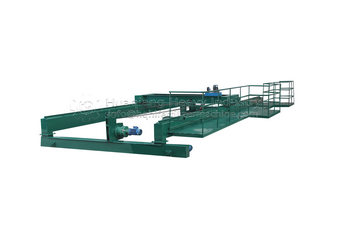
The double-screws turning machine is used for fermenting and dump of organic wastes such as livestock manure, sludge garbage, sugar factory filter mud, dregs cake and straw sawdust.

The fermenting and dumping of organic wastes, such as livestock manure, sludge garbage, sugar factory filter mud, dregs cake and straw sawdust, they are widely used in the fermentation and removal of water in organic fertilizer plant, compound fertilize